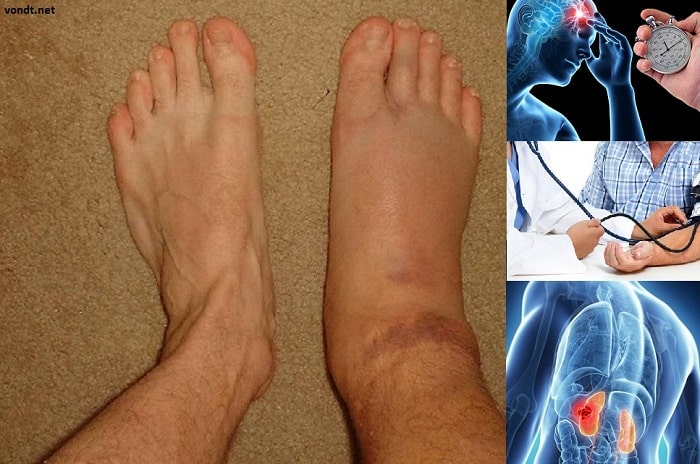That's why you have to take Hovne Ankles on Alvor
Last updated 07/12/2017 by The pain clinics - Interdisciplinary Health
That's why you have to take Hovne Ankles on Alvor
Persistent ankle swelling can mean serious illness. Read more about why you should not ignore swollen ankles.
Doesn't always have to be serious
Swollen ankles and feet can occur quite naturally because you have been standing or walking a lot. But it is if this swollen condition persists - even after rest - in combination with other symptoms that the warning lights start flashing. If the swelling is not reduced, this may indicate serious disease diagnoses.
1. Failure of the blood vessels (Venous insufficiency)
The veins are responsible for transporting the blood back to your heart. Swelling of the feet and ankles is often an early sign of failure of the blood vessels - a condition in which the blood is not transported efficiently up from the legs and further up to the heart. Normally, with healthy veins, the blood will flow upwards in one direction.
If these venous valves are damaged, blood can leak backwards and accumulate - which in turn causes swelling in nearby soft tissue in the legs, ankles and / or feet. Chronic blood vessel failure can lead to skin changes, skin ulcers and infection. If you have signs of venous insufficiency, you should consult a doctor.
2. Blood clot
When blood clots form in the veins in the legs, this can prevent the blood from flowing normally back to the heart. This leads to swelling in the ankles and feet. Blood clots can occur in the veins located just under the skin or deeper in the bone - the latter is called deep vein thrombosis. Deep blood clots can be life-threatening, as they can clog the main veins in the legs. If any of the plaque that forms these deep blood clots loosens, this can lead to blockage in the heart or lung - which is a life-threatening situation.
If you experience swelling in one leg, in combination with pain, low fever and possible skin discoloration - then you must contact a doctor immediately. Drug treatment consisting of blood thinners and cholesterol regulators may be necessary.
3. Heart, liver or kidney disease
Sometimes swelling in the feet and ankles can indicate problems with the heart, liver or kidneys. Ankles that swell in the evening can be a sign that salt and fluid accumulate due to right-sided heart failure. Kidney disease can also cause swelling in the feet and ankles - this is because if the kidneys do not work properly then fluid will accumulate in the body.
Liver disease, which results in less production of the albumin protein, can cause blood to leak from the blood vessels into nearby soft tissues. This is because this protein prevents such leakage.
If your swelling occurs in combination with other symptoms, including fatigue, loss of appetite and weight gain - then you should see a doctor. If you experience swelling and chest pain, as well as shortness of breath, then this may be a sign of serious heart disease - if there are signs of a heart attack, you must call an ambulance as soon as possible.
When to contact your doctor
If you experience persistent swelling of your feet and ankles, contact your GP. It is advisable to have such swelling investigated, as it may indicate serious disease diagnoses.
NEXT PAGE: - This Treatment Can Dissolve Blood Clots 4000x More Effectively
RELATED PRODUCT / SELF-HELP: - Compression sock
Compression socks can contribute to increased blood circulation in those affected by reduced blood vessel function in the legs and feet.
Click on the picture or here to learn more about this product.
 - Feel free to follow Vondt.net at YOUTUBE
- Feel free to follow Vondt.net at YOUTUBE
 - Feel free to follow Vondt.net at FACEBOOK
- Feel free to follow Vondt.net at FACEBOOK






Leave a reply
Want to join the discussion?Feel free to Contribute!